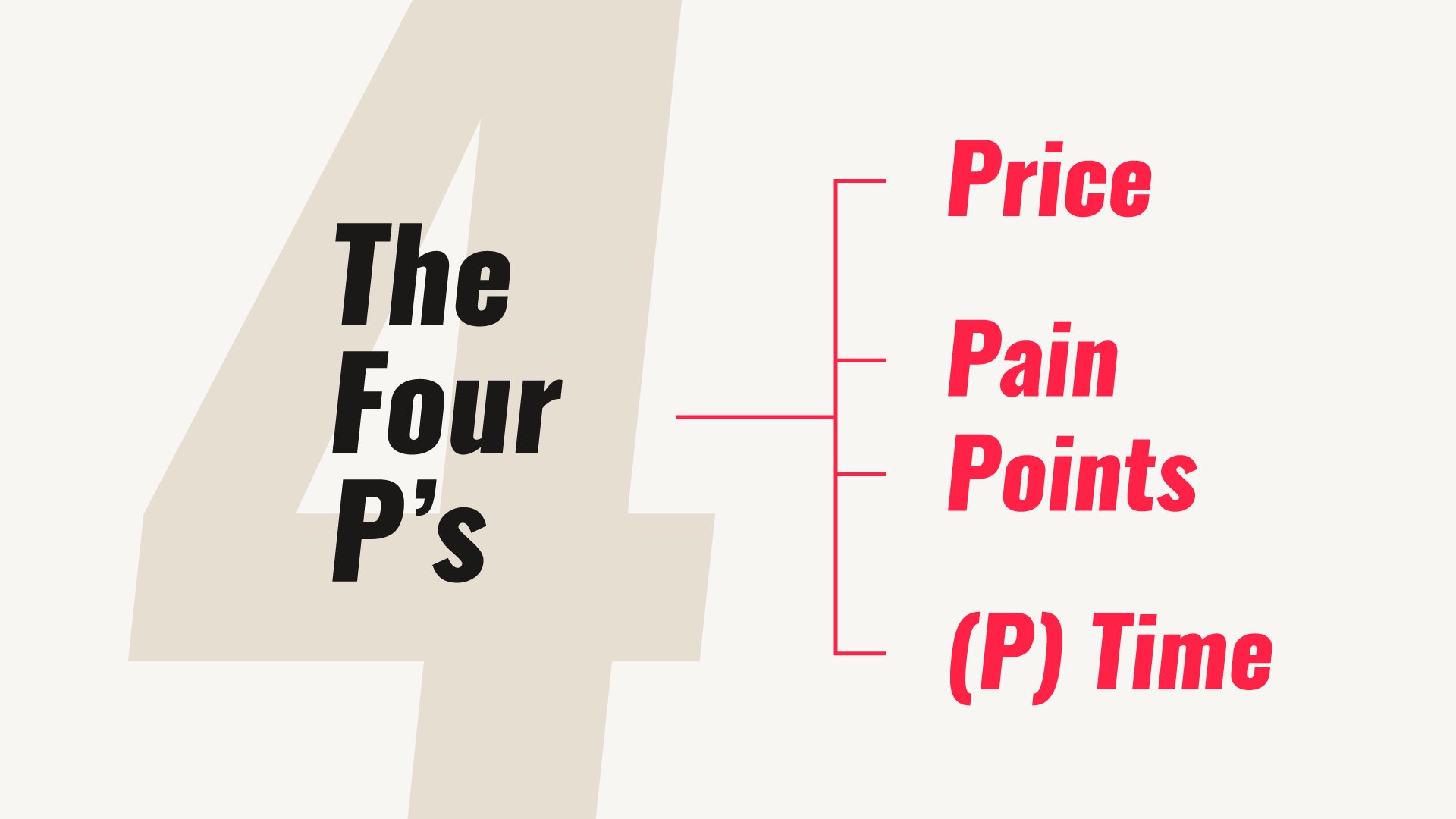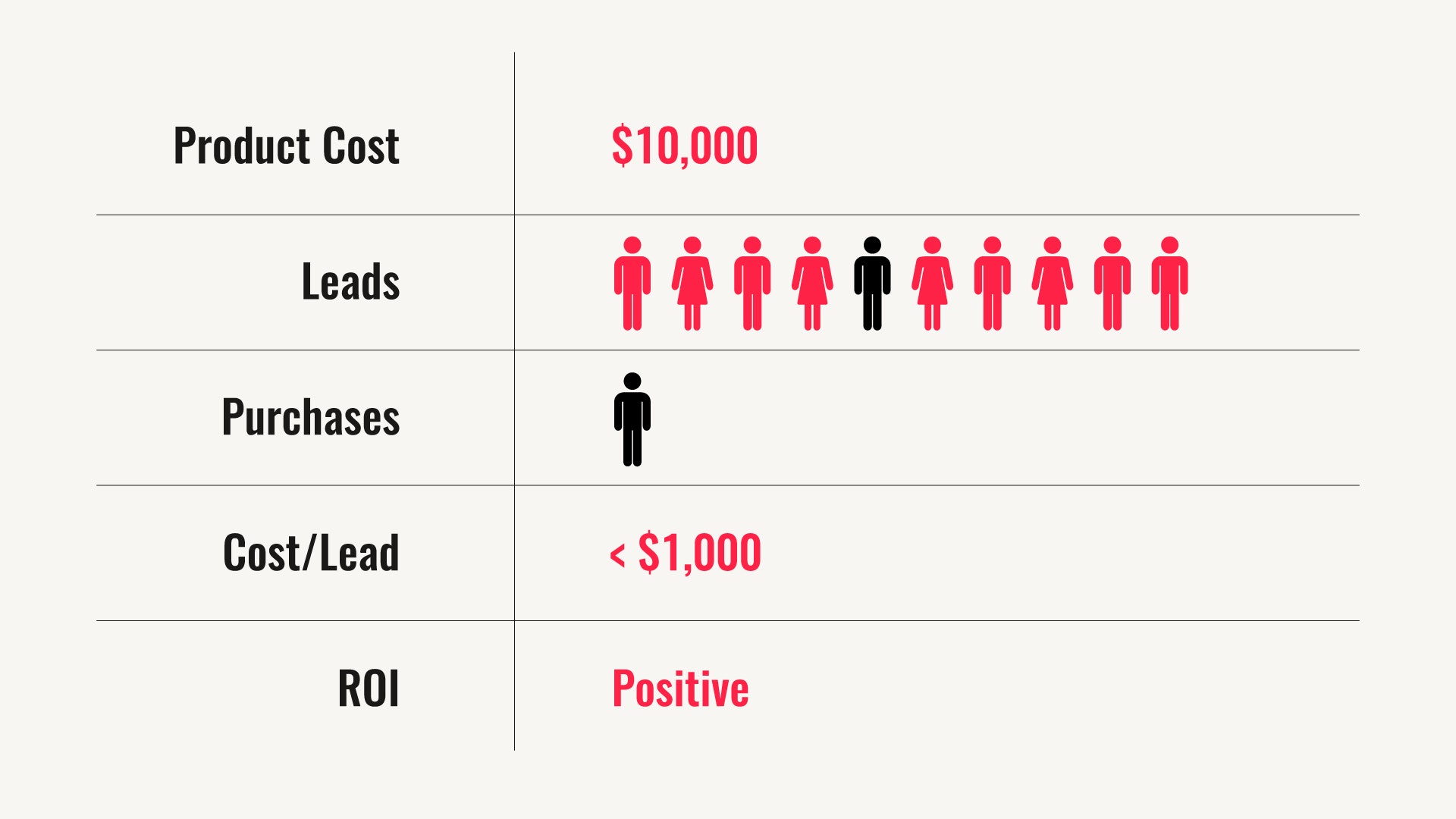Sales funnel harmony, folks, she is sweeter than candy. Everyone needs revenue, from the tippy-top of the org down to the bottom. That comes from opportunities, which the sales team is all about closing. Those opportunities are comprised of companies and accounts, which consist of individual people who pull that lever to become a customer. Every step of the way is important, but since lead generation is the first step, without it there is no shot to close deals.
Lead generation for B2B (or lead gen) is a completely different game than it is for B2C. Typically it involves a much longer purchase cycle, the close rate is lower and harder to discern, and there is a small sliver of targeted prospects who might eventually convert into eventual customers—not every person in the world needs what you’re selling. Therefore, to be good at B2B lead gen, your marketing has to be very intentional.
Let’s walk through a crash course on everything B2B lead generation, covering some ways to actually generate leads, best practices when doing so, and some benchmarks on the cost to pull prospects in.
Mandatory caveat: surprise! For those of you who read my stuff, this is the same old song and dance, but here it is again. Your business is a beautiful snowflake, just like you! Your customers, product, and marketing lifecycle are just as unique, so what I’m about to tell you is the broad strokes. To get this done, you’ll need a far more detailed plan with experts who know your business and customers. Element Three specializes in this engagement, so reach out to us if you’re interested in hearing more.
B2B Lead Gen Best Practices
Despite the uniqueness of every business and every customer, there are some investments you have to make in order for your lead gen plan to work properly. These are the things you have to think about before you start worrying about the nitty-gritty of what you’re going to actually include in that plan.
Start with your existing data as a foundation
As a rogue gunslinger I love to shoot first and ask questions later, but in most cases with marketing, it behooves you to do the opposite. Whoever you are, you probably have some kind of empirical data that can help you understand your customers and why they come to your company as a solution. Dig that up and lay it out.
Rough out personas: Decision makers, influencers, and customers
With that data, hopefully you can get some idea of who your ideal customer is (and if not, your sales reps probably have a good idea). Use that to create some personas to show who you need to target. Split these into various categories, like decision makers (i.e., the people who will actually be handing over the monies) and influencers (i.e., the people who hold sway with the decision makers) and your ideal customers.
Sometimes they’re all the same person, and sometimes the customer works under the influencer, who has sway with the decision maker who ultimately signs the check.
Martech systems are critical, get the right ones
You’ll need several mission-critical systems in place to do lead generation of any kind. A functional and flexible website for content expansion, lead collection methods (e.g., forms, logins, etc.), and a CRM for long-term storage, tracking, and segmentation.
Each of these is a crucial component, and Element Three has plenty of content on how to build, vet, and select the right options for you.
Price, pain points, and (p)time
There are many details that matter throughout your lead gen execution, but none matter as much as the 4 P’s: price, pain points, and (p)time. These are going to be the main things you’ll find you keep coming back to when it comes to trying to find and nurture leads, because they deal directly with the customer journey towards a purchase, and you need to figure out a way to fit within there.
Price is the money it’ll cost a customer to buy you (duh), but you’d be shocked at how many companies out there don’t offer their pricing. You want them to talk to sales, right?
Well riddle me this, when was the last time you were jazzed to talk to a sales rep? Never? *gasp* Guess what, no one really does anymore. They want to buy a product and have a customer service rep help them through the process. If you can explain your pricing outright, you can weed out leads who aren’t a good fit for you, and accelerate the ones who are.
Pain points are the main issues a lead has that cause the lead to seek your product or service. They’re the problem you solve for your customers. Each persona you create will have a different set of pain points, and marketing materials to answer them will be your pathway to prospects submitting their contact information to you. Discerning what those pain points are can be tricky, and it’s hyper-specific to your industry and customers.
The last (silent) “P” is time, or the average time for a lead to make a decision. Back to your data and persona research, there are various phases in which a potential lead will be looking for information. You’ll need ways to connect with them through each of these to address their needs and allow for them to submit information to you.
B2B Lead Gen Techniques
The foundation is laid, so now it’s time to start building your house. Here are the parts you need to fit together to construct the plan you’ll use to try to generate leads.
Researched content to meet future customer needs
With your personas laid out and your pain points for each one identified, you’ve opened the door for tailored content about future leads’ roles and the problems they need to solve.
All that content can be open and free to access or it can be sealed off, but the important thing is that you’re answering questions your personas have throughout their cycle of vetting your offerings.
This establishes authority to show them that they’ve come to the right place, and provides answers about what you do and why they should care. It’s ancillary to lead gen, but critical nonetheless.
Gated assets
More robust content that directly relates to potential customers, and content that offers big time value, can be gated, or placed behind a form. Once your prospect provides the information you ask for, they get the content. That’s your lead generation magic, something that’s so valuable and inherent to solving this problem your personas have that they’re open to hearing more from you as a company.
Digital tools
Similar to gated content, you can create functional tools that may help potential leads. Maybe it’s a pricing selector. Maybe it visualizes some outcome of using a product. Maybe it’s just something silly and fun that your personas may be into.
Whatever it is, it needs to provide entertainment or value to your potential leads to incentivize them to give up their email addresses in order to use it.
Incentives
Beyond just offering more information, you can offer incentives to grease the wheels. Discounts, free consultations, swag, or other materials can help get more leads in the door. This isn’t always the case, and in some cases it can hurt your chances for more leads, especially if you’re offering something more on the premium side. If you’re selling designer clothes, sometimes a sale actually makes you less attractive because it means you’re less exclusive.
You want to balance generating opportunities against the cost of devaluing your offerings.
Demand gen for all you’ve made
With all the points of conversion set up—the assets you’re going to provide people in return for their interest—now you need to find your potential leads and get them to the doorstep, to then submit their info and officially become leads.
Digital advertising is one great option to attract your audience’s attention, but you can’t just rely on one communications channel. With multiple personas acting throughout the purchase cycle, you need to show up in more than one spot to cover all the ground you need to cover. For instance, some personas may show up more at industry events like tradeshows, which means you need to have a traditional presence there. Others may be more active in online forums like Reddit or Stack Overflow, meaning that participating in discussions there would be a good time investment.
There’s certainly more, but it all depends on your business, your industry, and the specific personas you’re targeting. In other words: who can say what will work best for a phantom reader at a phantom company for a phantom product? I ain’t Nostradamus over here.
B2B Lead Gen Cost Per Lead (CPL) Benchmarks
This too (shocker) varies from company to company, industry to industry, product to product. But instead of leaving you hanging, here’s a good way to approach figuring out a solid CPL benchmark for your lead gen plan.
Product or service revenue
Start with the average cost of your offerings or, if you want to get specific, determine separate benchmarks for each price point you sell at. When driving leads, we’ll use this as the starting point.
10%, 10%, 10%
In general, a small portion of your budget will result in opportunities to generate leads from random impressions and views. From there a small portion of that traffic will actually convert into a lead or contact in your CRM, and of those leads, an even smaller number will end up actually being a customer (and that’s if you do your lead nurturing right).
Again, this will vary. Some ad conversion rates might be higher than others depending on the industry, but the customer close rate might be completely different. However, overall it’s fair to assume you can accomplish at least 10% rates across the board.
- 10% of ad impressions result in lead opps
- 10% of lead opps result in actual leads
- 10% of actual leads result in customers
This should at least get you a baseline from which you can test your lead gen methods. So, for example, let’s say your product has a one-time price of $10,000. That means to make that money, you need 10 total leads, which over time will ultimately yield 1 purchase. So, if your cost per lead is below $1000, then you’re generating a positive ROI on your marketing efforts.
That also means that to get 10 leads, you need 100 lead opportunities, coming from 1,000 ad impressions, all of which have cost associated with getting there. Obviously this is a simplification of a complicated ecosystem, but you get the idea. And depending on your 4 P’s (price, pain points and (p)time) you might need to do ongoing advertising and marketing communication to slowly nudge a customer forward, all of which plays into the conversion rate and CPL calculation. Having the right martech systems and reporting in place can automate this tracking process and close the loop on your marketing ROI.
Strategy and direction are key to lead generation success
B2B lead gen isn’t impossible, but it’s certainly harder than just blasting out ads about buying a $5 iced coffee. You have to know your customer and hit home on the questions they have, which will allow for you to then collect their information.
Targeting your personas is still another topic entirely, and it has its own nuances. Still, lay out your comprehensive strategy and you should be in a good spot for success.








